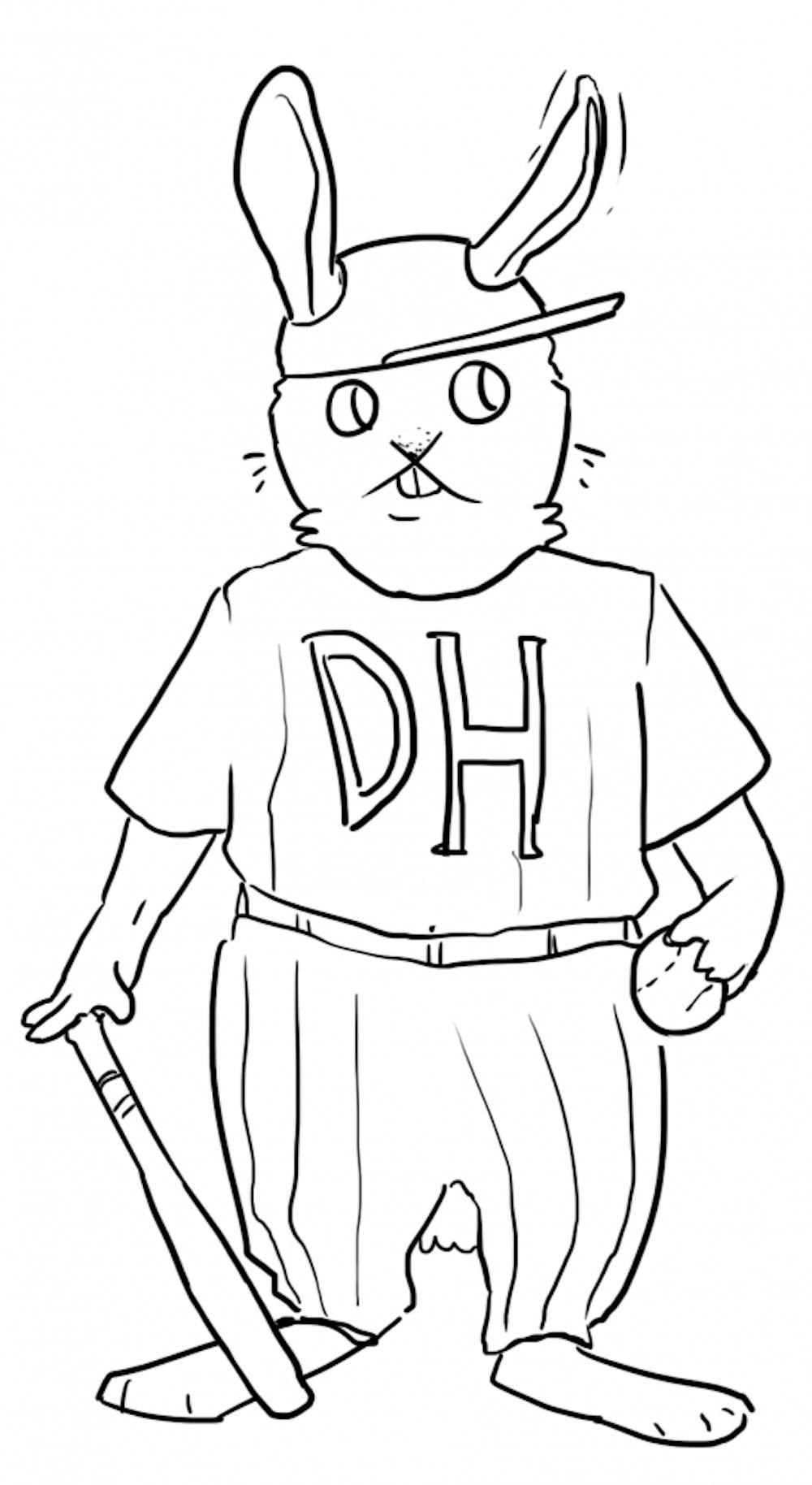There is perhaps no subject that divides baseball fans more sharply than the existence of the designated hitter. Since 1973 when the idea was first implemented, it has created a bitter divide between supporters and critics. But while each side of the debate is loud, they are not equally compelling. The DH should never have been introduced, and now that it does exist, it should disappear as quickly as possible — or, at least, should never expand beyond its current existence.
Supporters of the DH have various arguments, which boil down to two main themes: pitcher safety and the flow of the game. The pitcher safety argument says that pitchers should not hit — or run the bases — because they traditionally devote little or no practice time to offensive skills, which increases the risk of injury when pitchers attempt to do so. The other argument invokes game movement and excitement: it’s simply not fun, supporters will claim, to watch the pitcher strike out every time.
Both arguments come down to the same basic principle: Because pitchers are not good enough — or safe enough, experienced enough, etc. — to hit major league pitching, they should not have to. Pitchers, in short, should not hit.
The problem with this argument should be immediately clear. It’s not an argument about pitchers, but one about bad hitters, regardless of position. There is no reason any of the arguments given could not apply equally to a left fielder who hits as poorly as a pitcher.
Take the argument of pitcher safety. Supporters of the DH will argue that it should only apply to pitchers because they face a greater risk of injury than better hitters. This is true, but so what? All players face certain injury risks when they hit; why not let the defenders work on defense, and replace them on offense with players who train exclusively for hitting and running, and thus have smaller risks of injury? If injury risk is accepted as a valid reason to exempt a player from hitting — as it is by DH supporters — it should extend to all players. And clearly, no one wants that to happen.
Other supporters of the DH will claim that pitchers, on average, are by far the worst hitters in baseball. This is undoubtedly true, but it does not solve the problem. Anyone who advocates using the DH is advocating allowing players not to hit because they are not good enough. There is no logical reason that this should be restricted to the worst hitters in the game; indeed, anyone who truly believes in the DH should believe that the same system can be applied to every player in the game. Any argument for the DH carried to its logical conclusion will suggest that no player should be forced to play both offense and defense — a conclusion that is simply ridiculous.
All arguments for the DH face the same problem. Any player that plays the field must devote time to learning defense, which means less time to spend becoming a better hitter. Logically speaking, if one supports this argument for the DH, why not have separate players for offense and defense? The defensive players could spend all day doing fielding drills, and the offensive players could spend every waking hour in the batting cages. Better offense, better defense — problems solved! We made the game more exciting and cut down on risk of injury due to inexperience! How could this ever be wrong?
Baseball traditionalists, of course, will recognize immediately why this is wrong: it is not how baseball works. Baseball players must play offense, and they must play defense. That’s the sport. Even supporters of the DH, it seems, would agree almost unanimously that having two separate lineups for offense and defense would be a bad thing. But they can’t make that case with any legitimacy; By supporting the DH, they’re actually contradicting themselves.
Many people are unaware of the history of the DH. It was introduced to help the American League compete with the National League for fans, sponsors and money. While the idea had been debated since the early 1900s, it wasn’t adopted by the American League until 1973, after heavy lobbying from Charlie Finley, eccentric owner of the Oakland Athletics.
Somehow, it’s fitting. Besides the DH, Charlie Finley’s other groundbreaking innovations include gold uniforms, orange baseballs and an air jet that brushed home plate automatically. To increase ticket sales and turn his team into a national spectacle, he gave his players nicknames and had them grow mustaches. In Kansas City, he installed a mechanical rabbit to deliver baseballs to the umpires. Besides all this, throughout nearly his entire tenure as owner of the A’s, Charlie Finley was almost universally reviled.
Sure, it’s fun to watch giant, hulking men blast home runs, and less fun to watch a pitcher strike out without having much of a chance. But that’s baseball. You field, and then you hit, whether you can hit or not. The designated hitter should go the way of mechanical rabbits and gold uniforms and become a failed relic of history.
James Schapiro ’19 can be reached at James_Schapiro@brown.edu. Please send responses to this opinion to letters@browndailyherald.com and other op-eds to opinions@browndailyherald.com.





